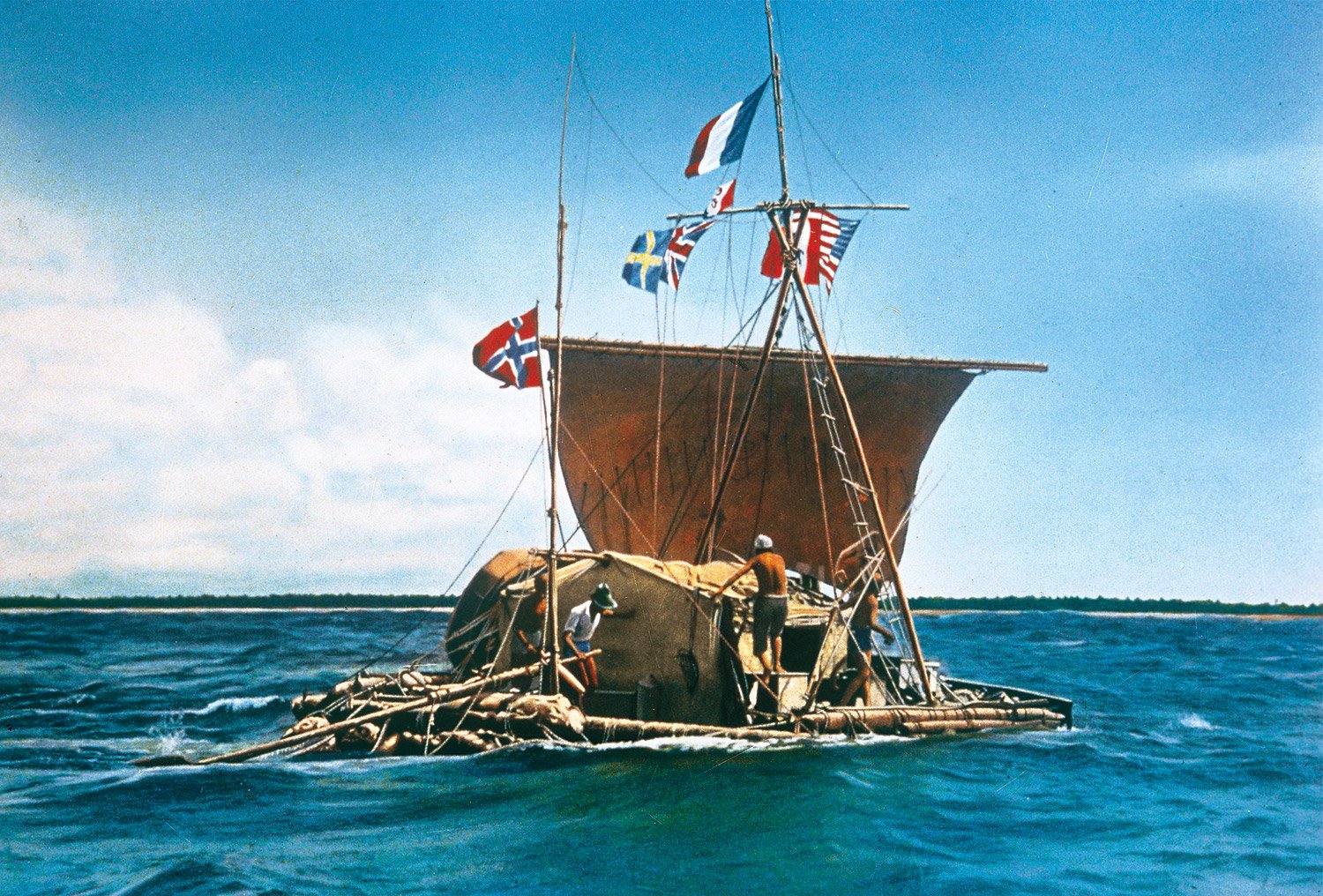Welcome to the Kon-Tiki Museum!
Plan your visit here ⟶
The museum is open every day throughout the year!
May at 10:00 - 18:00
June - August at 09:30 - 18:00
November - April at 10:00 - 17:00
(We are open until 3:00 PM on Christmas and New Year's Eve)
The Kon-Tiki Museum is renewing its exhibitions! We will be working on the exhibitions throughout the winter, and the plan is that everything will be ready by April 2026. The museum will remain open during this period however, visitor routes may change from time to time. Some temporary exhibitions will be on display while the new ones are being installed. The original Kon-Tiki raft, however, will always be on display!
What’s on
The Museum
The Kon-Tiki museum shows Thor Heyerdahl's famous life's work, which is characterized by a desire for research, environmental protection and sustainability and deep respect for indigenous peoples. The exhibits include the original balsa raft from the Kon-Tiki expedition and the reed boat Ra II. In addition, stories are told from Heyerdahl's journey to Fatu Hiva, together with his wife, Liv, expeditions to the Galapagos and Easter Island and the Tigris voyage. The Kon-Tiki and Ra exhibitions are specially designed for children, who can follow the stories of Johannes the crab and Safi the monkey.
Visit
Visit the Kon-Tiki Museum and see the famous vessels used by Norwegian explorer Thor Heyerdahl in some of the great sea voyages in modern history. The main exhibitions also have their own storylines for children.
The Kon-Tiki Museum is located on the Bygdøy Peninsula in Oslo. Via public transport, it can be reached with bus no. 30 all year round, and with the ferry to Bygdøynes in the summer season.
Thor Heyerdahl
Thor Heyerdahl was an experimental archaeologist, writer and adventurer. His name became most famous through an expedition with "Kon-Tiki" in 1947, when he sailed 8,000 km across the Pacific Ocean in a hand-built raft from South America to the Tuamotu Islands. He also made other voyages with the reed boats "Ra", "Ra II" and "Tigris" to demonstrate the possibility of contact between widely separated peoples in ancient times.
In 2011, Thor Heyerdahl's archive was listed on UNESCO's register of world monuments. The archives then included 238 collections from all over the world. The Heyerdahl archive spans the years 1937–2002 and includes his photo collection, diaries, private letters, expedition plans, articles, newspaper clippings, original book and article manuscripts.
Expeditions
His first expedition went with his wife Liv to the island of Fatu Hiva in the Marquesas Islands in Polynesia. The goal of the expedition was to leave civilization and live fully and completely in harmony with nature. In 1939–1940 he lived among the Kwakiutl Indians in British Columbia. These expeditions were to have a strong impact on his life. He noticed that the plant life, winds and ocean currents suggested that Polynesia might be populated from South America, and not Asia. It gave the idea for the Kon-Tiki expedition in 1947. Read more about Thor Heyerdahl's expeditions here.








